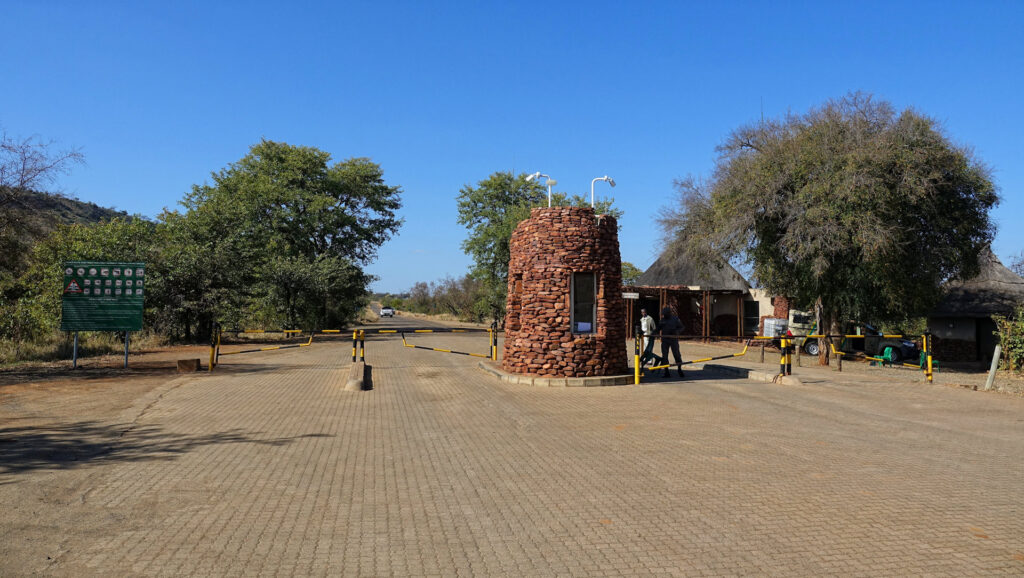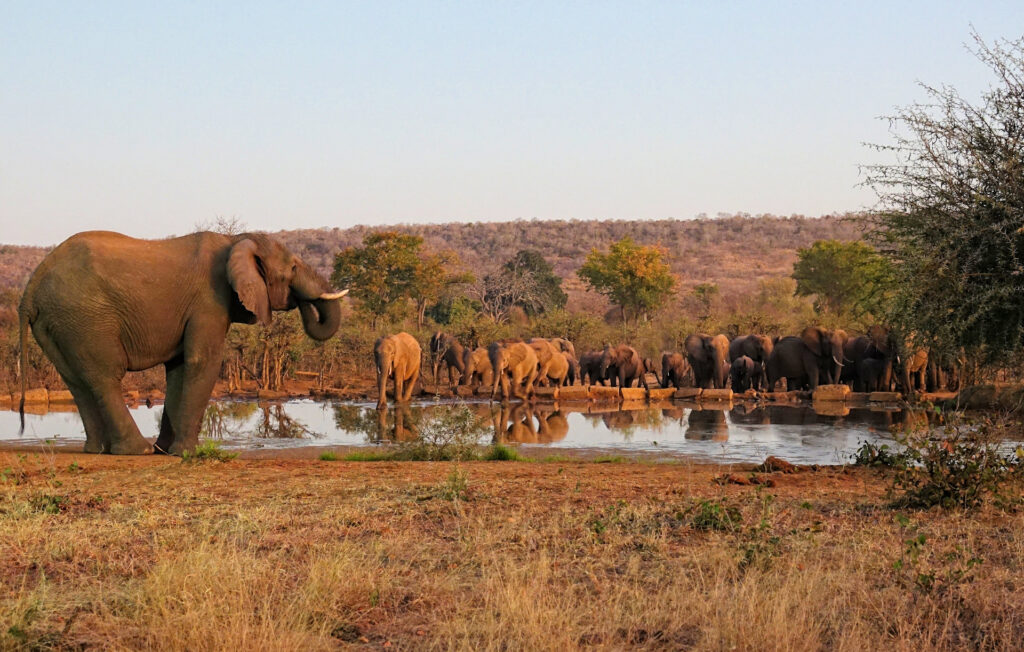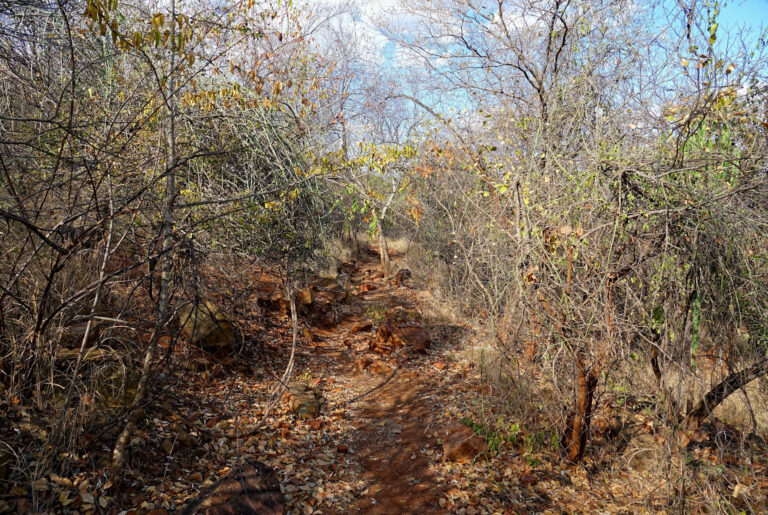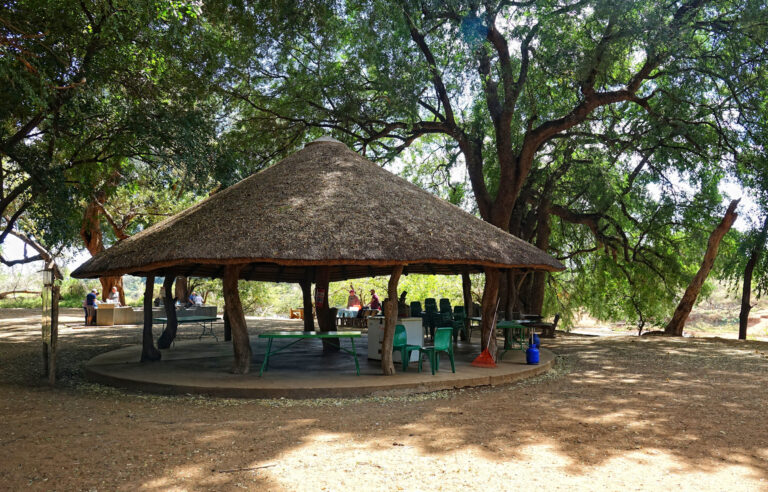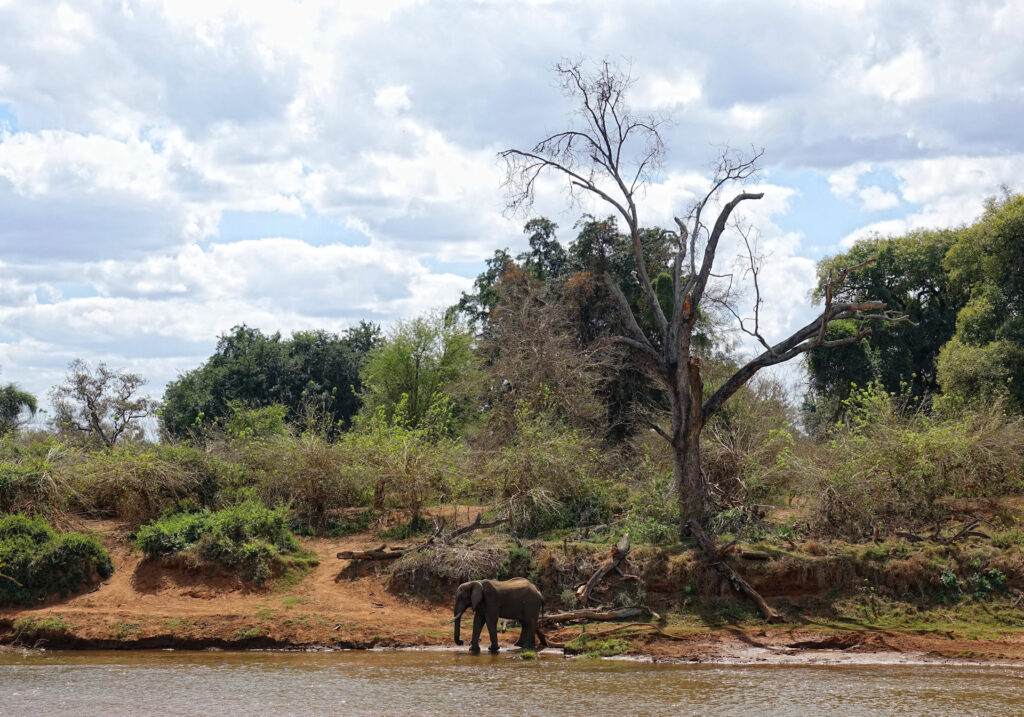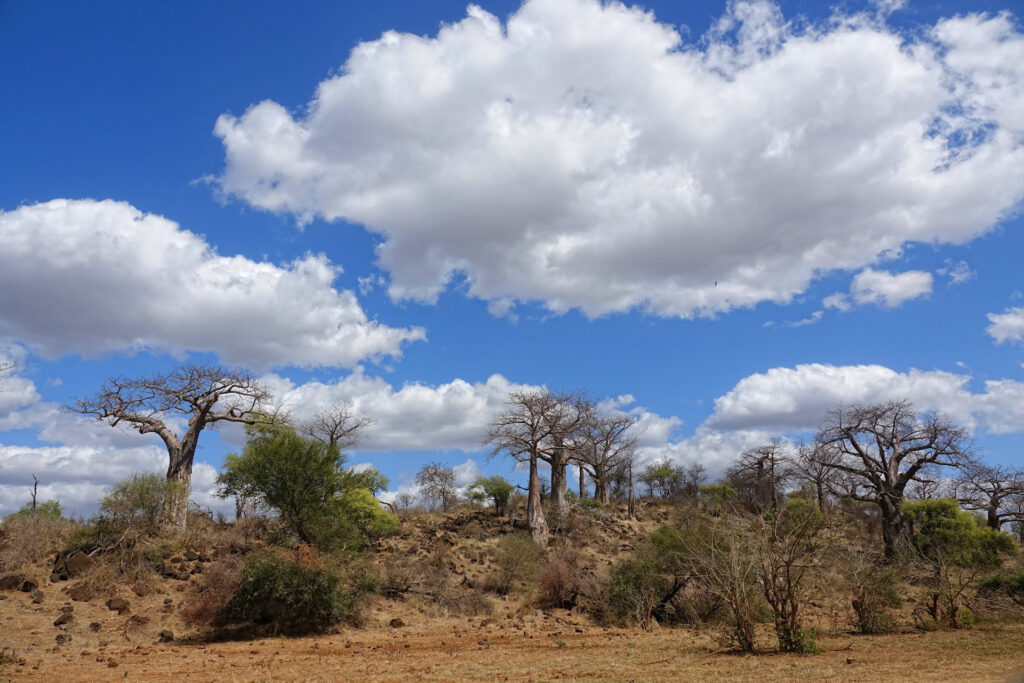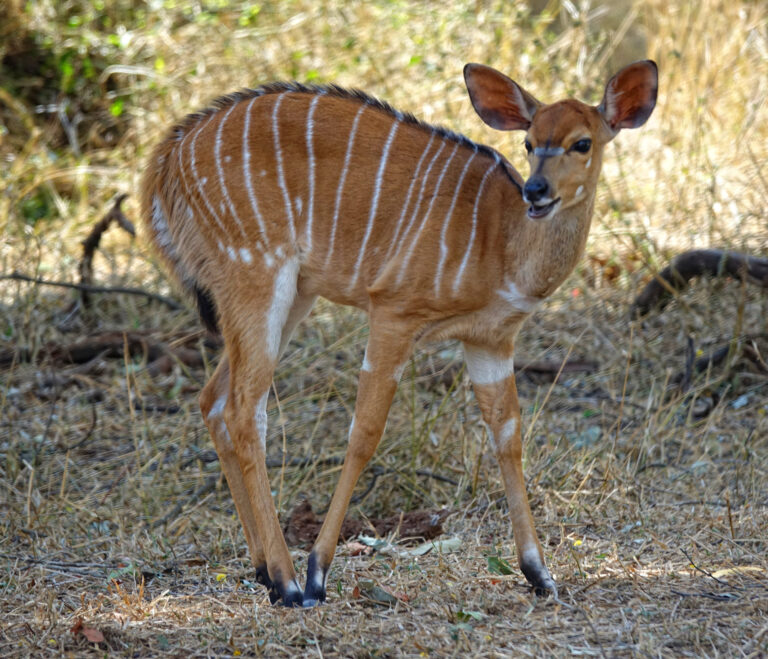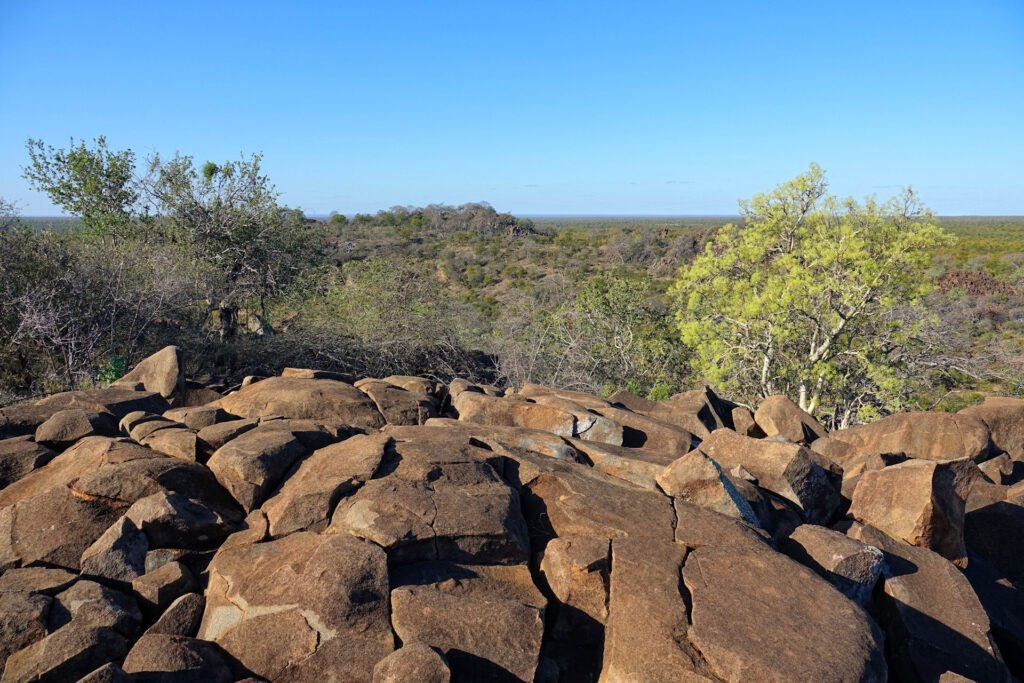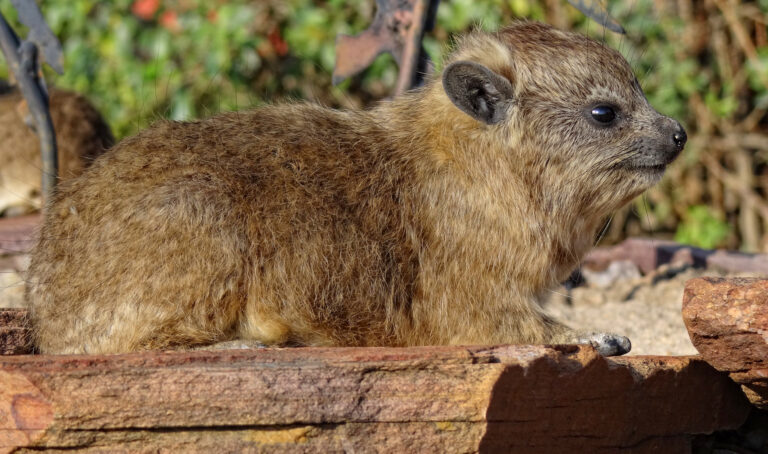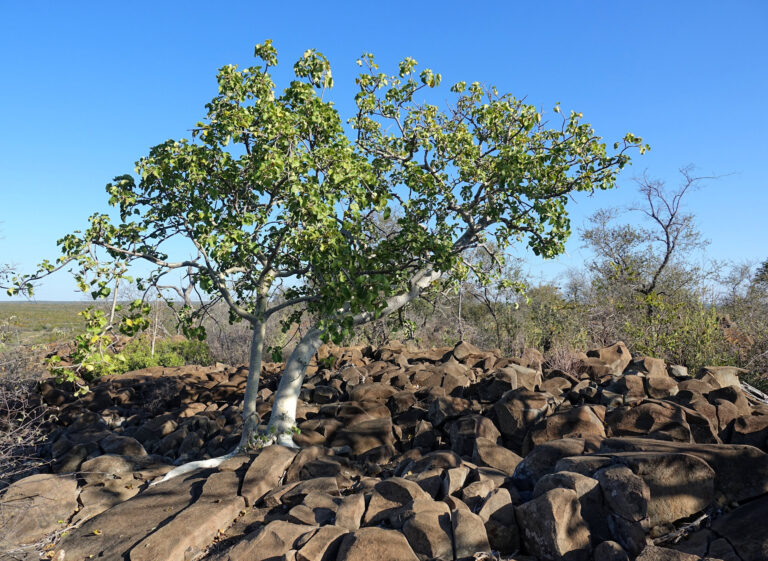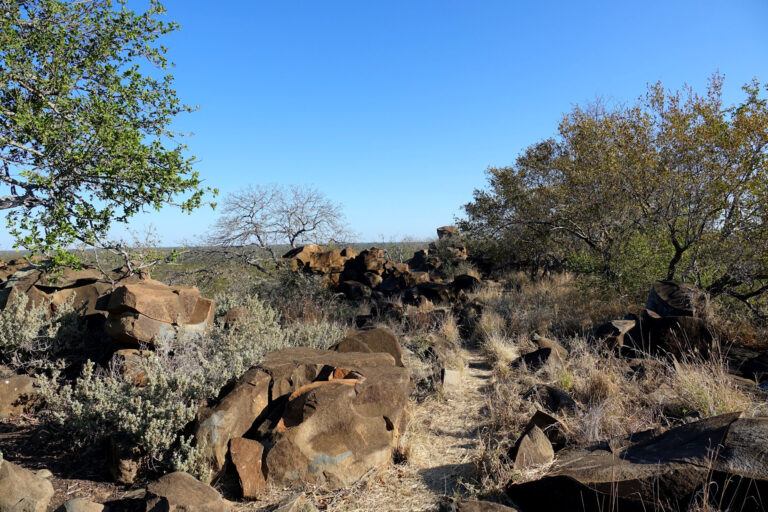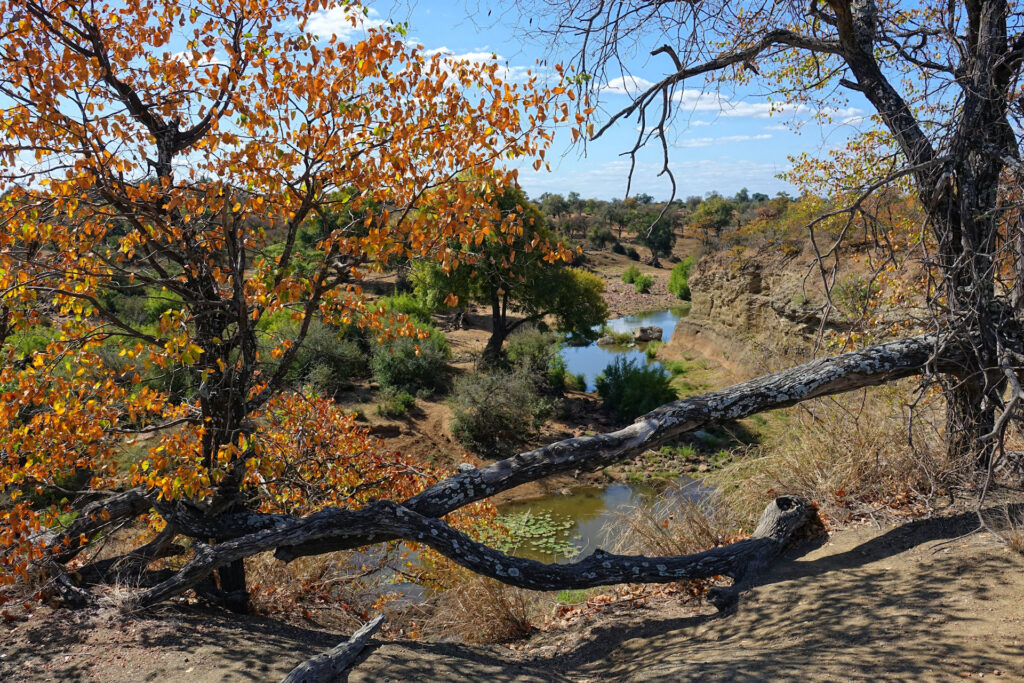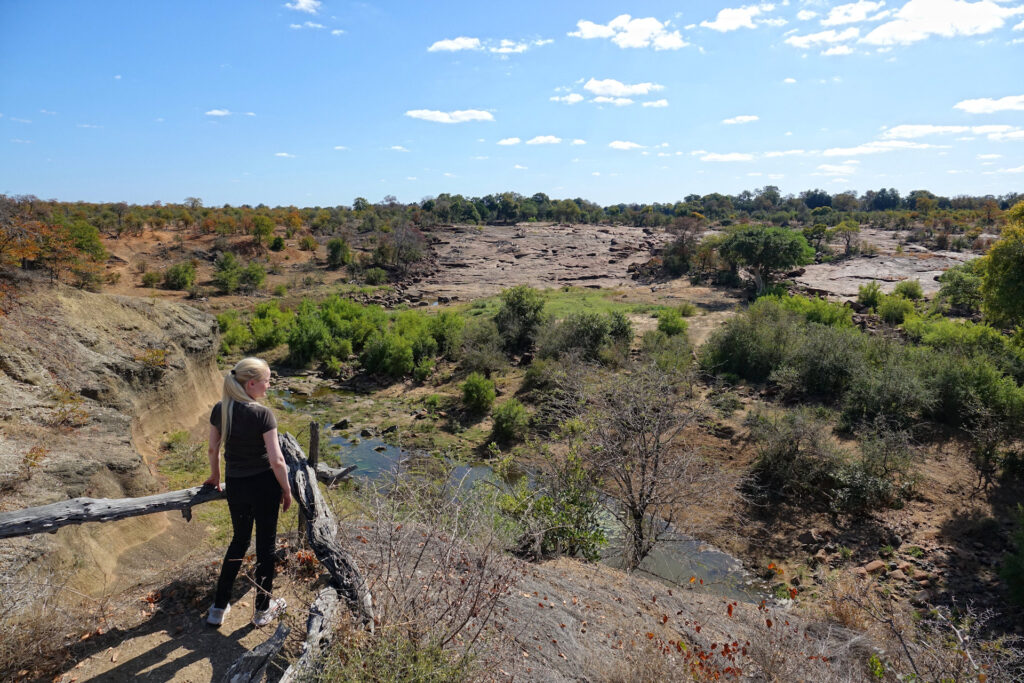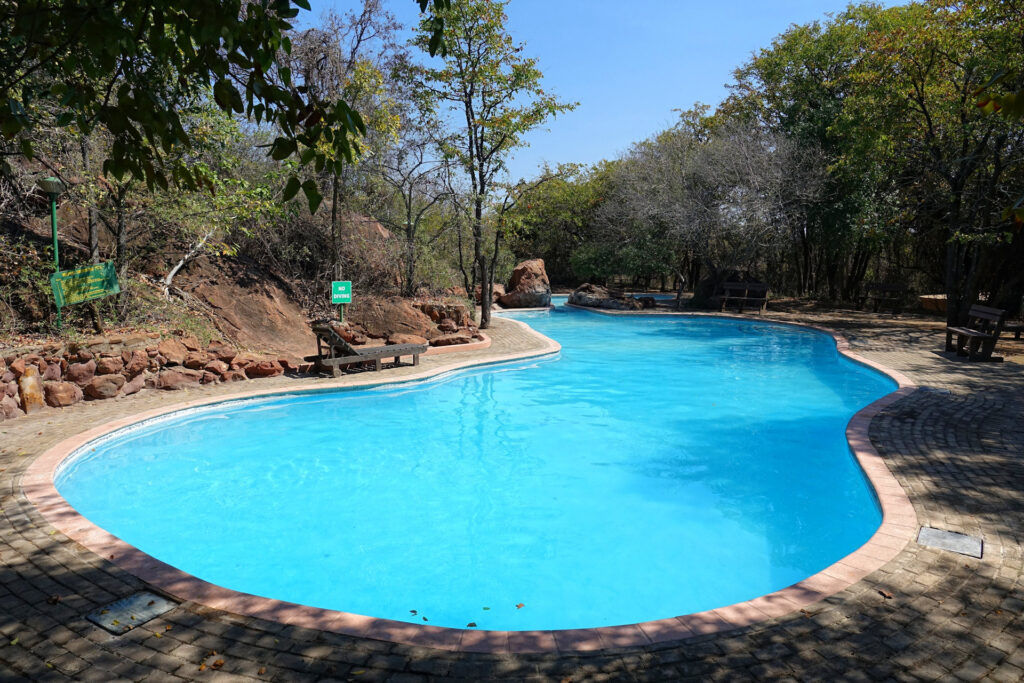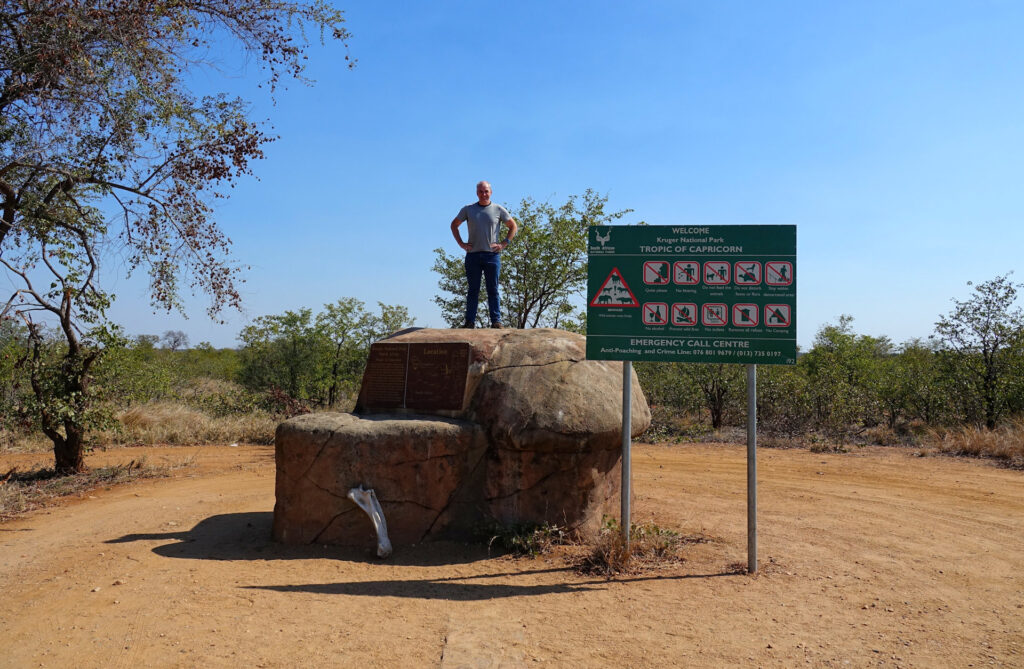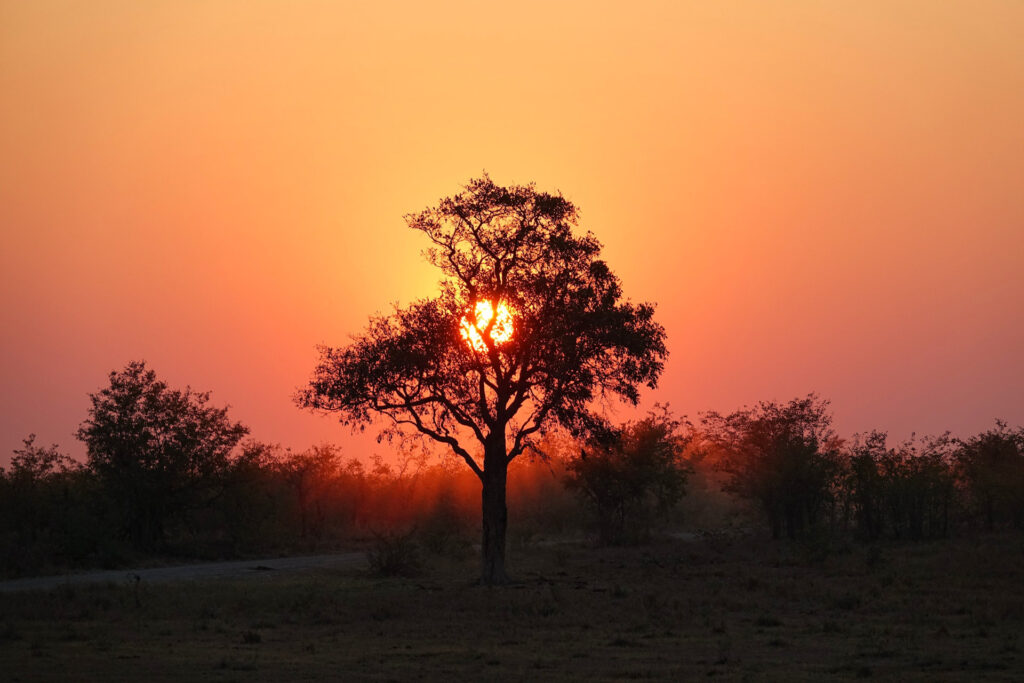It’s not easy to figure out how to spend your time best in the enormous Kruger National Park. There are nine different entrances to choose between. Most visitors pick what on the map looks like the most obvious option, and they end up seeing only the parts of the park that are closest to Johannesburg.
To keep both people and animals safe, the park has low speed limits and driving is only allowed between sunrise and sunset. This makes it impossible to drive through the whole park in a day. It would be a foolish thing to do, anyway. The best experiences in Kruger National Park are had when your car is standing still. The longer, the better.
Experiencing the highlights of Kruger is not about driving as far as possible. Amazing sights can come out of nowhere as soon as you enter the park. You never know what may happen, or where, or when. Still, the following is a list of special places, my favorite spots in the park. Some are quick and easy to get to. Others require a bit of driving and planning.
These recommendations are meant for those who want to get as much as possible out of their visit, and not for those who consider their trip a success as long as they see a lion and an elephant and never lose their Internet connection. Twice now have I spent at least two full weeks in the park. I have found that I generally prefer the parts of the park that see relatively few visitors. Naturally, those places also see relatively few recommendations. But here they are, just for you.
There is of course nothing wrong with the shorter safari experience that most people go for. Great sights can definitely be had on a brief visit to the southern triangle between Malelane Gate and the major rest camps of Lower Sabie and Skukuza. But for a deeper connection with Kruger, allow me to offer you some suggestions.
The starting point for my recommendations is firstly that you have a rental car and do everything as a self-drive safari. You can of course add morning walks and night drives done by guides from the park to this, but that’s very much optional.
Secondly, I recommend that you stay in the accommodation type that I think is the best option for international visitors who want to experience my favorite spots; cabins in the twelve rest camps inside the national park proper. For what you get, this is great deal. You hardly need to bring a thing. You get a kitchen, a bathroom with towels provided, and there are shops selling a surprisingly decent selection of reasonably priced groceries. These rest camps are safe to stay in, surrounded by fences that are robust, tall, and electric.
Staying in an official in-park rest camp gives you a major advantage. In the morning you will wake up very close to places that you can quickly drive to, where you can have your classic Kruger experience. Day visitors coming in from outside the park will catch up with you only later in the day, and they must leave again early to be out of the park before sunset. You will often find that early and late in the day you can have amazing spots all to yourself, exactly when they are at their absolute best.
Actually, my first highly recommended spot in the park is a rest camp. Let’s go!
Punda Maria Rest Camp
Starting in the north is a good way to avoid being “trapped” by the busy and highly convenient southern end of the park. Before you have experienced the north, you will not fully understand the immense tranquility and solitude found there. Maybe it is not objectively better than the busier south, but it certainly is different, and very easy to love.
The northernmost gate to the park is Pafuri, but I prefer to enter via Punda Maria Gate slightly further south. The road leading there is better, the scenery is great, the surroundings are safe, and you enter the park just a short drive from the lovely rest camp bearing the same name.
The drive from the O.R. Tambo International Airport outside Johannesburg to the Punda Maria gate is a long one, but the toll road between Johannesburg and Polokwane is nice and fast. Remember to bring a few hundred rand in cash to pay your way through. Even on this highway, expect to spend at least 7 hours on it, not including breaks for fuel, meals and shopping.
Unless you start early in the morning, it’s best to make it a two-day journey. This will allow you to enter the park with no stress relatively early on day two. The city of Polokwane is a convenient place to stop for the night. It’s about half-way, and it has several good and safe hotels.
Stock up on snacks and things you need along the way. There are several convenient shopping centers available right next to the highway. You leave civilization behind in Louis Trichardt, where Makhado Crossing Mall is your last great shopping opportunity. Following road R524, the last two hours take you past scenic hills that are home to many farms growing macadamia and pecan nuts, right up to the park gate.
The Punda Maria Gate sees few visitors. There is no queue to get in. From the gate it’s just a 15 minute drive to the rest camp. Check-in starts at two in the afternoon in every rest camp. If you arrive earlier, the best way to wait for your room is by going for a game drive on road S99, the Mahogany Loop. Keep your eyes open and go slow. With a bit of luck, you may see not just the Big 5 here, but several other animals as well.
The Punda Maria rest camp itself is cozy and intimate. There are only about 80 beds worth of roofed accommodation available, next to a relatively small camping site.
Despite its modest size, Punda Maria has the best in-camp waterhole in the park. Around sunset, that’s the place to be. There is great excitement to be had from first seeing an approaching cloud of dust rising above the trees, then hearing the distinct sound of large branches being broken, and finally watching a herd of buffalo or elephants appear from the bush, coming in for a drink and a bath.
In addition to watching animals, you can also observe how South Africans do their proper braai/barbeque, with wild creatures roaming freely very close, just on the other side of what may look like a disturbingly modest fence. It’s just a thing, something that South African park visitors find entirely normal.
Various birds and animals take turns owning the waterhole, in a show lasting well into the night. If you’re patient and wait in the hide long enough, you will see many different species popping in for a drink. It’s the only nightlife available in the camp, so enjoy the silent show.
Another highlight of Punda Maria is its very pleasant swimming pool. On warm days it may be better to cool down here than to drive around in a sweaty car and only find semi-conscious animals that are too hot to perform.
Just make sure you don’t leave any important items lying around while you’re in the water. Park rangers armed with simple slingshots may try to keep the cleptomaniac vervet monkeys away, but there’s only so much they can do.
Also check out the Flycatcher Trail. It’s not the longest hiking trail, but in this largely trail-less park, it’s a rare opportunity to burn off a few calories and stretch your legs after a long day of sitting and snacking in the car. An electric fence makes it a safe walk, but you can still suddenly find yourself exhilaratingly close to one or more decidedly wild animals.
Road S63 – Luvuvhu River Drive
Towards Kruger’s northern end lies the prettiest drive in the park. The river Luvuvhu is hugged by S63, a curvy gravel road, pleasantly shaded by exactly the kind of trees that leopards love to climb with their kill for a quiet meal. This road takes you from the excellent Pafuri picnic spot in the west, to Crook’s Corner in the east. You are allowed to exit your car in both of these places.
The Pafuri picnic spot has barbeque facilities, benches, tables, and clean toilets. From its location next to the river, you can observe elephants, warthogs, crocodiles, and almost any other Kruger animal you can think of, as they come down to the water to drink.
Pafuri picnic spot on Google Streetview.
There’s a park employee present, so you can feel reasonably safe when taking a break here. Never mind that the largest crocodile in the park was recorded here; 5 meters long and weighing 900 kilograms. Just always keep a distance of at least the length of two crocodiles between yourself and the river.
For geography nerds, Crook’s Corner is a special treat, and so much more than just a nice view. From where you park and get out of your car, you can look out at an international tripoint. This is where the three countries of Mozambique, South Africa and Zimbabwe meet. Something will probably eat you if you try to walk out to the actual point, though, so please stay close to your vehicle.
Although both the picnic site and the tripoint are themselves cool places to visit, the main attraction around here is still the road that connects them. Especially during the dry season. Even when most of the Kruger park lies brown and leafless, you will always find a jungle-like green forest here.
These particularly rich and lively surroundings are home to many living things, including many giant baobab trees.
While the Pafuri area covers only 1% of Kruger National Park, it still finds room for 75% of the park’s biodiversity. This includes several species of antelope rarely seen in the south, like nyala and eland, in addition to all the usual suspects you will find everywhere in the park.
Thanks to all the meat that walks around and the easy access to water, leopards thrive in this habitat. There’s a good chance you will see one. And nowhere else in the park will you find more bird species.
The best way to see the Pafuri area is by driving serendipitously around for a full day, between two nights at the Punda Maria rest camp.
You will perhaps not see all the animals you hoped for, but the landscape and the pure pleasantness of the shaded drive alone is guaranteed to fill you with happiness.
This is Baobab Hill, an prominent old baobab tree you will see on your drive north from Punda Maria rest camp to the Luvuvhi river.
Tshanga Viewpoint and Road S52
The first time I visited Tshanga, I almost could not believe what I saw.
We arrived there after more than a week in the relatively crowded south of Kruger. Park officers and signs further south will tell you that if they see you as much as excitedly pointing a hand out your car window, you may expect to be fined. This is obviously rarely enforced, but still, it’s a relevant rule to ensure visitor safety.
In addition to inside the fenced rest camps, there are only a few places in the park where you are allowed to exit your car. These are mostly picnic sites where one or two park employees armed with a broomstick will walk around to create the illusion of a safe place. On some major bridges in the central and northern sections of the park, you can also stop your car at the center of the bridge and go outside.
Tshanga is nothing like that.
Someone must have thought that only sensible and experienced safari-goers venture as far north as to Tshanga.
Tshanga is a typical landscape feature in the Kruger; a lonely steep hill with a rocky area at the top. We had previously driven past many of those, where I half expected to see a mandrill appear, holding up a lion baby for us to behold. Or I would imagine that the warm rocks up there must be a nice home for venomous snakes seeking heat.
Things like that.
Generally not the kind of place I necessarily want to explore on foot. But when you’re there, you kind of just have to do it, right?
Unlike every other hill of this kind, the Tshanga hill has a road leading up it. Where the road ends, there’s a parking space for three or four cars, next to a wildly out-of-order outhouse toilet.
And there’s a sign. It says that here you are free to leave your car! Obviously, at your own risk.
Plenty of bush surrounds the parking space, allowing pretty much anything smaller than a medium-sized elephant to hide. A small path leads through the bush and up to the rocky hilltop. It feels like the beginning of many a movie I have seen, movies of the kind that rarely end entirely well. Even before you leave your car, you get the feeling that someone or something out there is watching you. Smelling you. Possibly purring in anticipation of their next meal.
We have always been the only car around when we have visited Tshanga. It’s close to the residents-only Bateleur bushveld camp, so maybe most people think they’re not allowed to drive up to Tshanga. But you are. This place is open for anyone.
If you actually dare to get out of your car and walk up the trail, you will be rewarded with arguably the best view in all of Kruger.
Unless you’re eaten on your way up, of course. Which you won’t be, although one should expect to suffer a minor heart attack or two, as lizards suddenly move in the grass right next to the trail, or a dassie that lives there decides to stop sitting still and instead run off to hide between the rocks.
The view you get is of an open savanna, stretching towards the horizon in every direction. To the east you look down at a small river. During dry times the river mostly disappears underground, leaving just a few small ponds for animals to drink from. So as you sit down at the top of Tshanga, high up above the land, you will most likely see animals roaming the area below you.
If you’re lucky, sable antelopes may appear. Keep watching.
Apart from the occasional rustling grass, Tshanga is a pleasantly quiet spot.
Receiving few visitors, it’s a popular place for people who want to scatter the ashes of loved ones who treasured the park. This is allowed, as long as you get a permit first. I certainly can see why someone would pick this spot as their place for the eternal rest.
When you feel like you have pushed your luck far enough, calmly return to your car.
Your hike up to the viewpoint may have felt like a scary and long trek, but the return journey will reveal that it was just a quick walk of less than a hundred meters.
For a great combo, make your trip to Tshanga a minor detour from a morning or sunset drive on the S52 Red Rocks Loop. The drive itself is lovely, and likely generous on animal sightings. The loop even offers another spot where you can briefly exit your car; the Red Rocks Lookout.
How red the rocks actually appear to you, depends heavily on the time of the day and the weather, but you’ll always have a nice view of the Shingwedzi river.
The Red Rocks Lookout on Google Streetview.
A night in the Shingwedzi rest camp is the best base for a trip to Tshanga and the Red Rocks Loop. Whether you go late or early doesn’t matter, but going in the middle of the day can get too hot for comfort.
Want more?
Here are some additional northern treasures you really shouldn’t miss:
The lovely Mopani rest camp
This place has a great pool, amazing restaurant views of a large dam with lots of animals all the time, and a nice half-hour hiking trail, too. Spend at least one night here.
The Tropic of Capricorn rock marker
A fun stop on the main road between the rest camps Shingwedzi and Mopani, this is where you officially leave or enter the tropical part of Africa. There’s a large rock you can climb up on. The last time I was there, someone had left a huge leg bone at the base of the rock, to use as a “ladder” to get up.
The location is highly exposed to any passing wildlife, so please make your stop here short and safe.
The Letaba Elephant Hall
Several rest camps have some kind of educational display hidden away somewhere, but Letaba has a whole proper elephant museum going on. In the Elephant Hall you can learn much more than you ever thought possible about elephant tusks, and some of the largest pieces of ivory on the planet are mounted on the walls.
A few taxidermy gems from other species are also on display, together with a bottled lion foetus!
Crossing large rivers in the north
Most of the major bridges in the northern part of the Kruger National Park double as safe viewpoints. This works here, because there are not so many people around. In the southern part of the park, allowing this would just create traffic jams.
Unless a pack of elephants or baboons are on the bridge, you can stop halfway across the bridge and go out and enjoy the views up and down the river. Quite often there is interesting wildlife around, and if there isn’t, check for animal tracks in the sand or mud below. Usually there will be plenty, and it’s a fun exercise to figure out what tracks belong to what animals.
Tips and tricks for your own northern adventure
Hotel in Polokwane
If you decide to do follow my recommendation and stay a night in Polokwane, the Town Lodge Polokwane is a good choice, for several reasons:
- It has good value rooms.
- It has a safe parking spot outside, and you’re not close to any unsafe areas anyway.
- The meals at Town Lodge are not that good in general, but there’s a large and more expensive casino hotel within walking distance, where you can get a good meal. There’s also a KFC just a short and safe drive on the main road south from the hotel.
Wild Card for Kruger National Park
The entrance fees for national parks in South Africa are much higher for international visitors than for locals. This is as it should be, since the parks are also financed through taxes paid by the South Africans.
If you’re visiting Kruger and/or other national parks for a total of at least seven days per year, you can save substantially on your visit by getting a Wild Card. Note that international visitors can only buy the “International All Parks Cluster” ticket.
In 2022 this cost 3,575 South African rand for a single person, and 5,585 South African rand for a couple. The standard fee in Kruger National Park is 420 rand per person per day, so this can quickly become a bargain. Especially when you factor in that the ticket is valid for a full year, in more than 80 parks around all of South Africa and Swaziland.
Stay cool in your car
You will spend many hours every day in your car, and it’s far between places where you can buy a cold drink.
To fix this problem, buy a cooler box to keep in your car. This can be bought in any supermarket in South Africa, and also in the shops in the rest camps. In your room you will almost always have a refrigerator with a freezer unit. Put a couple of bottles of water inside the freezer overnight, and you’ll have solid frozen ice in the morning. Put them in the cooler, and you have a refrigerator in your car the whole day
Be an early bird
In every rest camp you will find a sign saying when the gate is shut around sunset and when it opens in the morning.
Be at the gate 10-15 minutes before the time shown on the sign. Sometimes, if they decide there’s enough light outside to let people go, they will open the gate a little bit early. The earlier you get out there, the better are your chances of discovering something exciting for yourself.
Phalaborwa excursion
A nice day’s drive from Letaba rest camp is the area west of Letaba, all the way to the Phalaborwa gate. From that gate, it’s just a three minute no turns drive to a large Spar supermarket, where you can get many items that are not available in the park shops. The guards at the gate will most likely let you go and return without any park exit/entry paperwork if you just tell them what you’re doing.
If you feel like seeing exactly the opposite of the natural wonders of the Kruger, a twenty minute drive from the Phalaborwa gate can take you to a viewpoint where you can look down into an unbelievably huge open pit mine. It’s really something else!
If you’re interested, this is the route you’ll follow from the gate. There’s no fee to enter the viewpoint, and absolutely no facilities apart from the incredible view up there.


